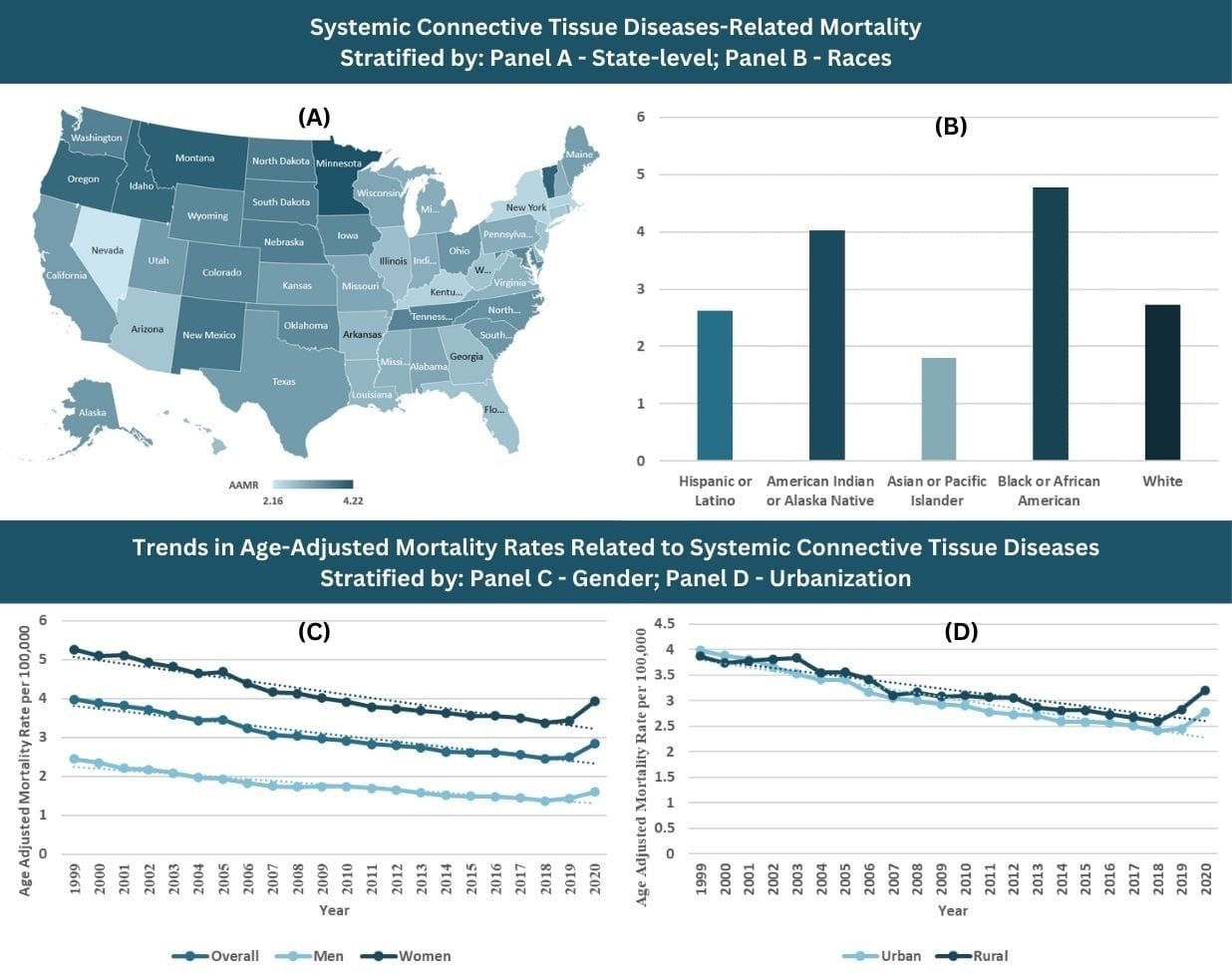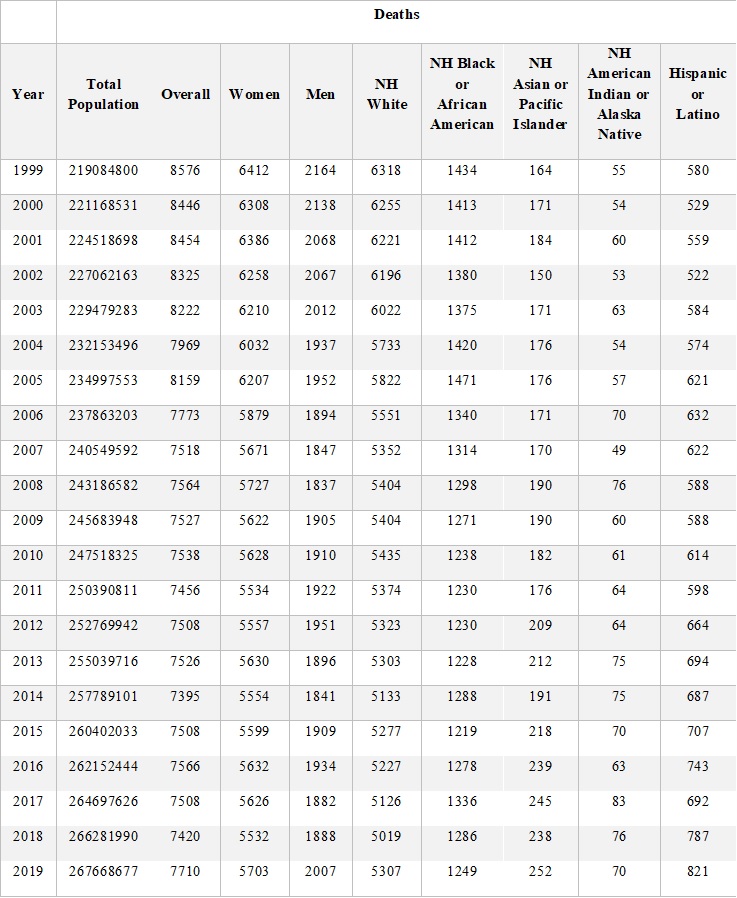Session Information
Session Type: Abstract Session
Session Time: 3:00PM-4:30PM
Background/Purpose: The mortality burden of systemic connective tissue diseases (CTDs) is expected to rise in the U.S population because of multimorbidity and ageing. The primary objective of our study was to examine mortality trends in systemic CTDs.
Methods: The CDC-WONDER (Centers for Disease Control and Prevention Wide-ranging OnLine Data for Epidemiologic Research) database was utilized to identify deaths due to systemic CTDs in individuals aged 15-85+ years from 1999 to 2020. Age-adjusted mortality rates (AAMRs) per 100,000 population were determined. Joinpoint regression was used to analyze trends in AAMRs using annual percent change (APC).
Results: From 1999-2020, 172,551 deaths occurred from systemic CTDs with an overall AAMR of 3.03. Following an initial period of decrease from 1999 to 2018 (APC: -3.05; 95% CI: -3.29 to -2.85), mortality rates significantly increased from 2018 onwards (APC: 6.64; 95% CI: 1.64 to 8.95). AAMRs were higher for women (4.12) compared to men (1.75), with a more pronounced increase observed in men from 2018 to 2020 (APC: 7.80; 95% CI: 1.50 to 10.70). In racial and ethnic groups, the highest AAMRs were observed in the NH Black or African American population (4.78). Adults older than ≥85 years (24.89) demonstrated the highest AAMRs, while adults aged 35-44 years showed a significant uptrend in mortality from 2015 to 2020 (APC: 4.24; 95% CI: 1.37 to 11.07). Additionally, adults aged 65 years to ≥85 years also exhibited rising mortality trends from 2018 onwards. The West displayed the highest AAMRs throughout (3.24), whereas significant upward mortality trends were noted in the Northeast and South from 2018 to 2020. In stratification by urban-rural classification, significant disparities occurred with rural counties displaying the highest AAMRs (3.21), with a more marked significant increase in AAMRs being observed in urban counties from 2018 to 2020 (APC: 6.96; 95% CI: 1.16 to 9.65). States in the 90th percentile (Minnesota, Montana, Vermont, Idaho, Oregon, and New Mexico) had AAMRs twice as high than those in the bottom 10th percentile (Arizona, Connecticut, Kentucky, Massachusetts, New York, and Nevada).
Conclusion: Despite a previous decrease in systemic CTDs-related mortality rates, which could be attributed to advanced treatment modalities, AAMRs showed a rapid incline from 2018 onwards. Elderly patients face elevated mortality risk, emphasizing the need for improved systemic CTD monitoring and early diagnosis. Moreover, ethnic and geographic stratification revealed significant disparities.
To cite this abstract in AMA style:
Khan N, Furqan Y, Salman M, Ali E, Rehman W, Allahi I, Yasmin F, Asghar M. Mortality Trends for Systemic Connective Tissue Diseases Across the United States from 1999 to 2020: A CDC-Wonder Database Analysis [abstract]. Arthritis Rheumatol. 2024; 76 (suppl 9). https://acrabstracts.org/abstract/mortality-trends-for-systemic-connective-tissue-diseases-across-the-united-states-from-1999-to-2020-a-cdc-wonder-database-analysis/. Accessed .« Back to ACR Convergence 2024
ACR Meeting Abstracts - https://acrabstracts.org/abstract/mortality-trends-for-systemic-connective-tissue-diseases-across-the-united-states-from-1999-to-2020-a-cdc-wonder-database-analysis/



